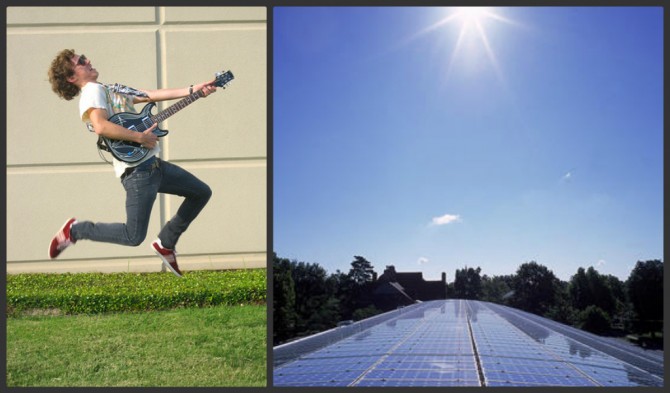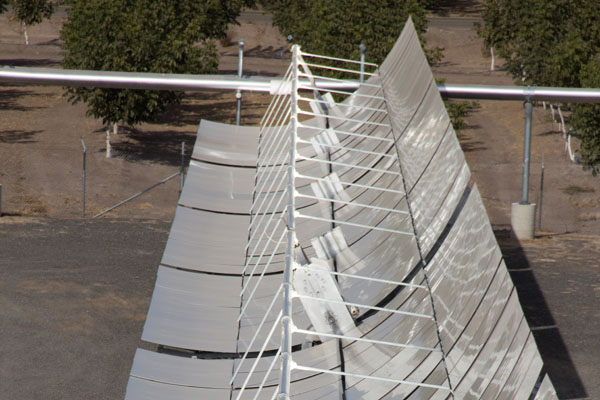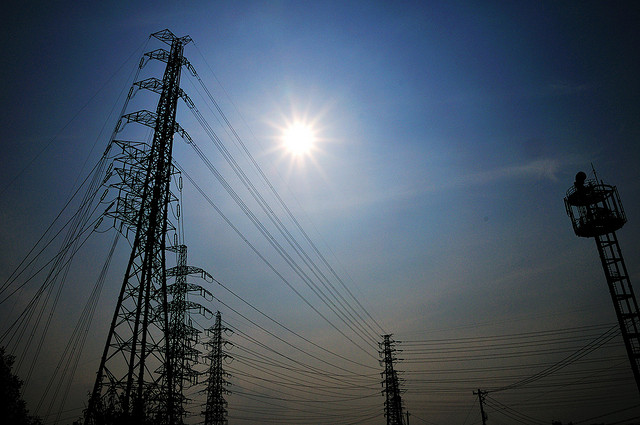
Photo Credit: Some rights reserved by Jams_123 on Flickr.
And here’s the latest on solar energy news: pop music and steam piston engines make for better solar power use. Who knew renewable energy could be so exciting?
Solar Power and Pop Music
Turns out solar cells are also from the work hard, play hard school. Science Daily reports that playing pop and/or rock music can improve performance of solar cells, specifically those that contain nanorods. The discovery has important implications in the development of next generation low-cost printed solar cells.
Scientists from the Queen Mary University of London and Imperial College of London found that an increase of up to 40% in solar cell efficiency could be achieved by playing pop music to cause vibration in the solar cells. It’s all thanks to the high frequencies and pitch present in pop and rock music, to which the researchers’ acoustic solar cells best respond to. This means that putting on Owl City’s “Good Time” is a better bet in increasing solar cell efficiency than, say, Pachelbel’s classical piece “Canon in D”.

Rock on for Solar Power. Some rights reserved by scaredporcupine and Living Off Grid respectively on Flickr.
Dr. Steve Dunn, co-author of the study, said “After investigating systems for converting vibrations into electricity, this is a really exciting development that shows a similar set of physical properties can also enhance the performance of a photovoltaic.”
The researchers used nanorods built from zinc oxide and covered with an active polymer for the solar cells. It has been previously known that zinc oxide materials respond to the application of pressure by giving off voltage outputs, also known as the piezoelectric effect. This is the first time however that the piezoelectric effect on solar efficiency has been closely studied. Dr. Dunn said “The work highlights the benefits of collaboration to develop new and interesting systems and scientific understanding.”
The team’s findings may one day be used to build solar-powered devices that can be exposed to acoustic vibrations (like air conditioning units or cars) to enhance performance.
Solar Power and Steam Engines
Sometimes, stepping back is a way to move forward. For a team of Australian engineers, the answer to solar energy storage came not from cutting edge technology but from old fashioned technology: steam piston engines.
Solar power has had to overcome many hurdles as a renewable energy resource, one of which the most important is energy storage. Gathering and using power directly from the sun is only possible when the sun is shining. On rainy or cloudy days, solar energy users either have to fall back on generators or backup power systems.
But the green energy startup Terrajoule proposes a novel storage system that promises to provide solar energy 24 hours a day – at cost effective prices.

Terrajoule’s solar concentrators used to produce steam. via Terrajoule
Terrajoule accomplishes this by using steam piston engines and insulated pressure vessels integrated into a storage system. First, solar concentrators (shown above) works to produce steam. The steam engines then convert the steam to electricity. Then energy is stored in steam accumulators filled with water and built with steel pressure vessels. Terrajoule further explains how their system works:
“Since it is impractical to store gaseous steam for later use, the steam is condensed into the mass of water where its energy is stored. When needed, the stored energy flashes the water back to steam. The energy lost in this steam-water-steam phase change cycle is less than 2%. Terrajoule’s proprietary architecture allows for energy storage at below 18 bar, while achieving the efficiency of inlet steam at 42 bar. At 18 bar we exploit the sweet spot for pressure vessel pricing that is driven by the worldwide Liquid Propane Gas storage industry (however there is only water, and no propane, stored in Terrajoule’s vessels).”
Terrajoule hopes to deliver their system at a competitive peak watt price of $1.50-$2.00/watt (dependent on variables) by 2015. Compared to pricey battery storage systems, Terrajoule offers a solar power storage solution at 80% less cost with no degradation or cycle limits. In addition, Terrajoule’s system ensures there will be no toxic waste to worry about. The company estimated their product has a lifetime of 25 years at the minimum.
The opportunities for widespread adoption and use of solar power rise with every incremental innovations and breakthroughs like these. Soon, green energy users will be able to sing “It’s always a good time” for solar power.





Leave a Comment